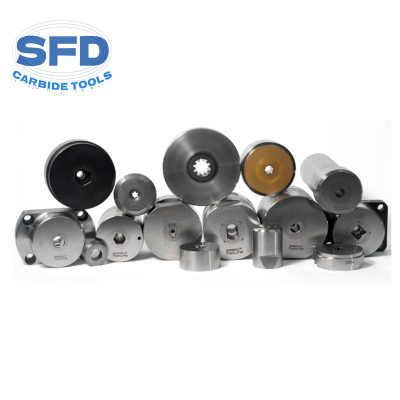The Blueprint For Perfect Wire Production
The design of the inlet area and lubrication area is particularly critical in wire drawing and twisting molds. The entrance area usually has a circular arc to facilitate the smooth entry of the wire into the working area, and the lubrication area plays a role in lubrication and drawing.
- The workspace is a crucial part of metal stretching and requires selecting the appropriate height and angle based on different materials and diameters.
- The sizing area is responsible for ensuring that the product reaches the final size, and the principle of selecting height is similar to that of the workspace.
- The exit area is the final part of the wire leaving the mold hole, usually designed with a 45 ° exit cone angle to protect the sizing area.
- The precise design and optimization of wire drawing and twisting molds are crucial for the quality of cable production.

Entrance area:
Generally has a circular arc, which facilitates the entry of drawn wire into the working area without being damaged by the edge of the mold hole; lubrication Liquid storage and lubrication of the drawn wire are used to increase the height of the working area in the stretching die hole, which is generally 25% of the total height H of the die blank, at an angle of 60 degrees.
Reduction area:
It is an important part of the entire mold hole, and the metal tensile plastic deformation is carried out in this area, where the metal material passes through the cross-sectional dimensions. The selection of this area is mainly based on height and cone angle. The principle for selecting height is as follows:
- a. When drawing soft metal wire, the hard metal wire should be drawn as short;
- b. When drawing small diameter wire, the larger diameter wire should be drawn as short;
- c. When drawing wet process wire, the dry lubrication wire should be drawn as short;
- d. Generally, the height should be 1-1.4 times that of the fixed diameter area
The working cone angle is selected based on the following principles
a, the smaller the compression ratio, the smaller the working cone angle;
b, the harder the drawn material, the smaller the working cone angle;
c, the smaller the material used for drawing small diameter materials.
Generally, when stretching metals and their alloys, the angle is 16-26 °. When pulling copper wire, the cone angle is 16-18 °, and when pulling aluminum wire, the cone angle is 20-24 °.

Bearing area:
Its function is to obtain the final size of the product, and the principle for selecting its height is:
a) the drawn soft metal material should be shorter than the drawn metal material,
b) the drawn large diameter material should be shorter than the drawn small diameter material,
c) the wet stretching is shorter than the dry lubrication stretching, and generally selected h=0.5~1.0d.
Exit area:
The exit area is the last part of the drawn material leaving the mold hole, which can protect the sizing area from cracking. The exit cone angle can avoid damage to the metal wire at the sizing exit and damage caused by wire retraction during shutdown, usually at a 45 ° angle.





